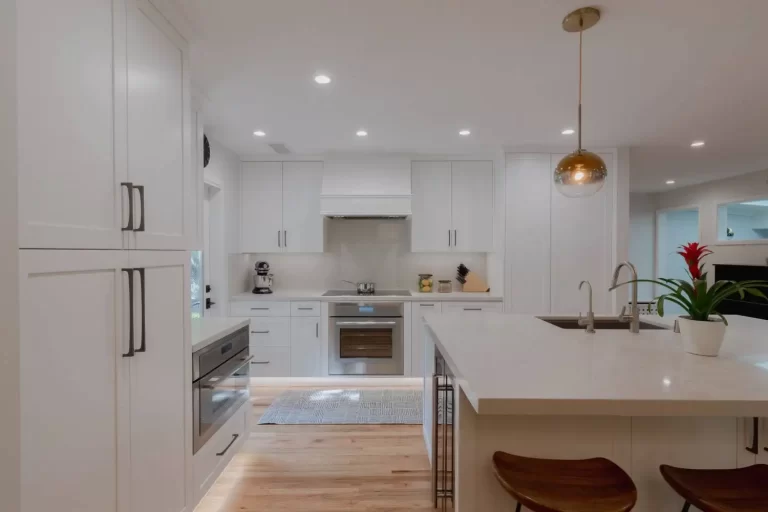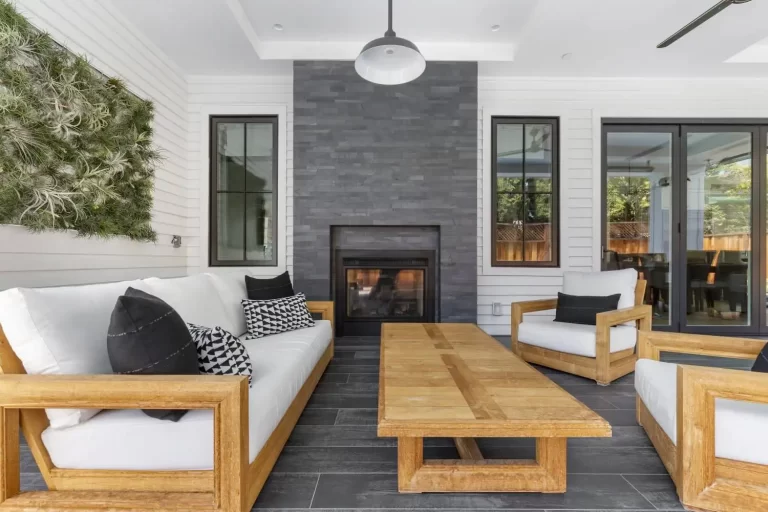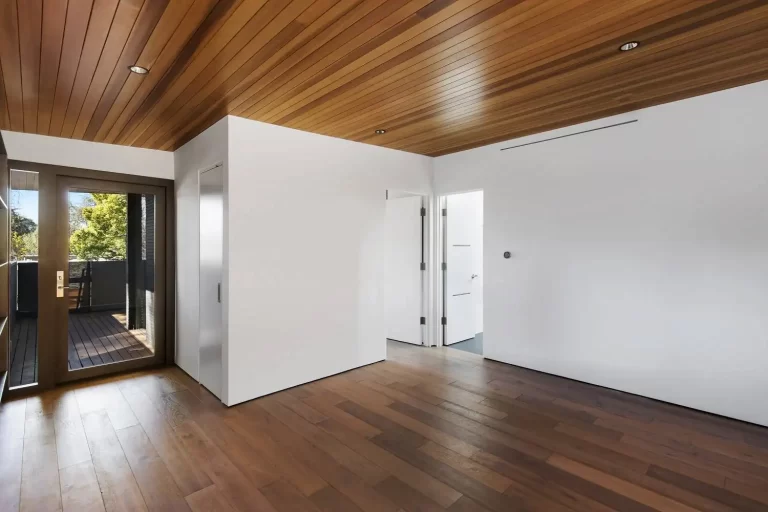When it comes to the delightful task of renovating your cabinets, the decision between painting and staining can often be a puzzling one.
The options each offer their own unique advantages and drawbacks, making it crucial to dissect the pros and cons of both methods.
By delving into the realm of painting and staining cabinets, we aim to guide you towards a well-informed choice that aligns seamlessly with your style preferences and financial considerations.
Painting Cabinets: A Spectrum of Colors
Pros:
- Versatile Palette: One of the prime advantages of painting cabinets is the freedom to delve into an expansive array of colors, granting you the liberty to harmonize your cabinets with your kitchen or bathroom’s overarching ambiance.
- Contemporary Appeal: The transformation that freshly painted cabinets bestow upon your living space is nothing short of spectacular, instantly infusing it with a modern and stylish aura.
- Maintenance Ease: The smooth surfaces created by paint applications make cleaning a hassle-free task, ensuring that maintenance remains a breeze.
- Imperfection Concealment: In the case of minor wood blemishes, paint functions as an excellent camouflage, bestowing your cabinets with an impeccably smooth facade.
Cons:
- Veiled Wood Grain: A factor that some individuals hold dear is the concealment of the natural wood grain, which is an inherent drawback of the painting process.
- Chipping Susceptibility: Over time, painted surfaces might experience chipping, especially in high-traffic zones, necessitating touch-ups and maintenance.
- Preparation Precision: To ensure a pristine paint finish, meticulous preparation including sanding, priming, and a steady hand during application becomes paramount.
Staining Cabinets: Enamoring Natural Elegance
Pros:
- Enriched Wood Grain: Staining cabinets is a celebration of the innate beauty of wood, the process accentuating its natural warmth and character in a captivating manner.
- Timeless Charm: The endearing and sophisticated allure of stained cabinets radiates an ageless elegance that perfectly complements a myriad of interior design themes.
- Diminished Upkeep: Stained finishes possess the remarkable ability to age gracefully, necessitating less upkeep and maintenance when compared to painted surfaces.
- Craftsmanship Highlight: Staining accentuates the finesse of wood quality and artistry, allowing the craftsmanship to shine through and be celebrated.
Cons:
- Color Palette Constraints: While the range of hues is extensive in the realm of paint, stains are limited in their color offerings, potentially restricting your creative design choices.
- Flaw Exposure: Stains may lay bare any imperfections in the wood, emphasizing the importance of thorough preparation to ensure a flawless result.
- Consistency Challenge: Achieving uniformity in staining across diverse pieces of wood requires meticulous application and skill to prevent discrepancies.
Frequently Asked Questions
Which of the two methods offers a more cost-effective approach to updating cabinets?
Painting often costs less upfront than staining due to materials.
Is it possible to paint over stained cabinets or vice versa?
Yes, with proper sanding and preparation for best results.
Do stains provide the same level of protection as paint for cabinets?
Stains provide moderate protection but may require more maintenance.
What is the anticipated lifespan of painted cabinets compared to stained ones?
Both can last well with proper care and maintenance.
Can opting for painting or staining enhance the resale value of my cabinets?
Updated cabinets can boost the overall resale value.
Are there environmentally friendly alternatives available for both painting and staining cabinets?
Yes, low-VOC paint and water-based stains are eco-friendly options.
Which method is more adept at achieving a rustic or farmhouse-style cabinet aesthetic?
Staining excels at achieving a rustic or farmhouse-style aesthetic.
Could you outline the steps involved in adequately prepping cabinets for paint or stain application?
Steps involve cleaning, sanding, priming, then paint or stain.
Is it feasible to alter the color of stained cabinets without initiating a complete refinishing process?
Color changes require specific stains and refinishing techniques.
Should I consider any particularities regarding humidity and moisture resistance for each method?
Proper sealing is crucial for both methods in humid environments.
Conclusion
In conclusion, the decision to embrace the path of painting or staining cabinets is essentially a reflection of your unique inclinations, design tastes, and your willingness to dedicate effort to maintenance.
The palette of paint offers vibrancy and a polished finish, while staining serves as a conduit to showcase the intrinsic allure of wood.
By scrutinizing the advantages and limitations of both approaches, and by taking into account your specific requisites, you’re primed to craft an atmosphere that encapsulates the essence of your kitchen or bathroom. The luminosity of painted cabinets or the warmth of stained wood is certain to augment the visual and tactile allure of your cherished living space.






